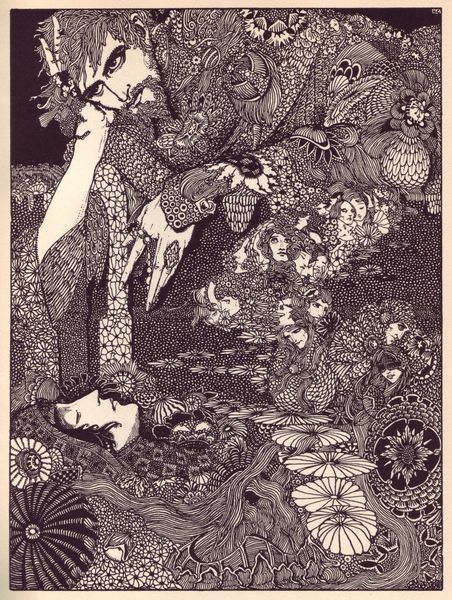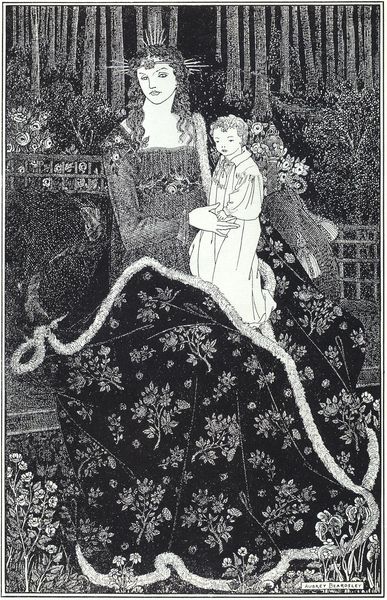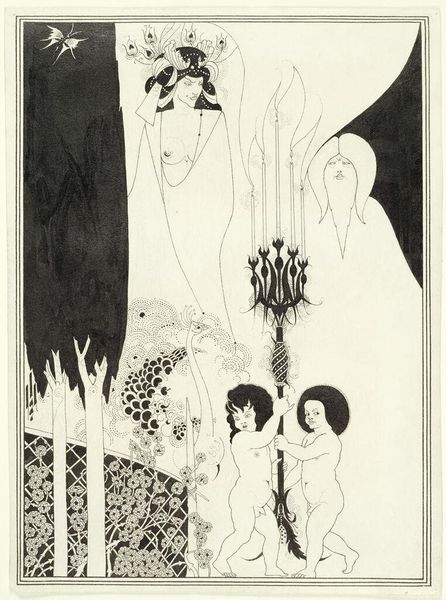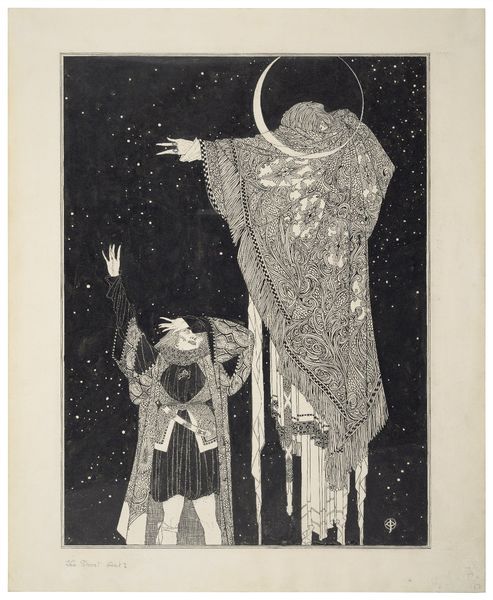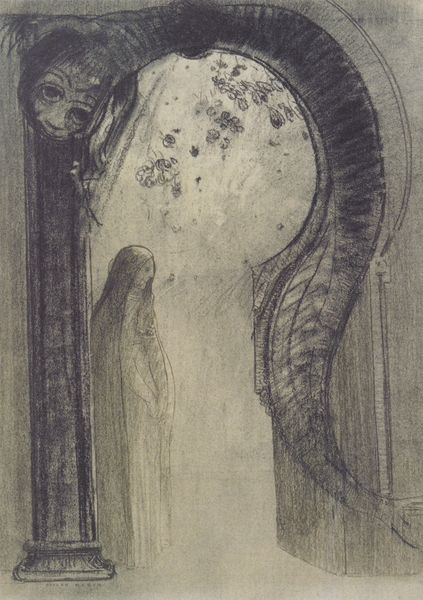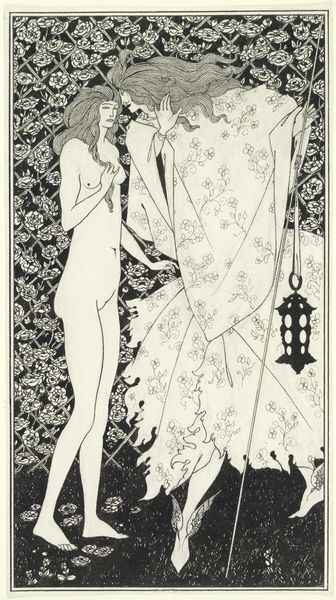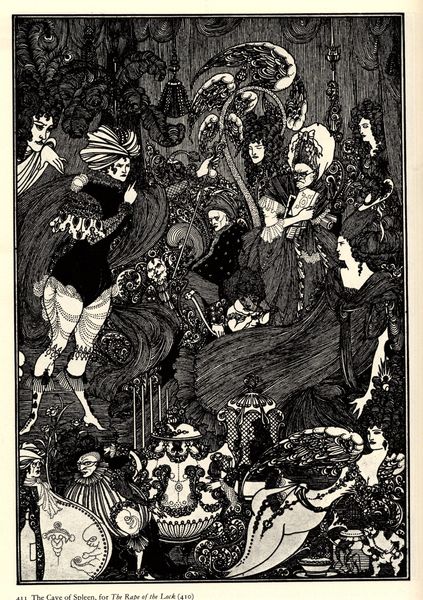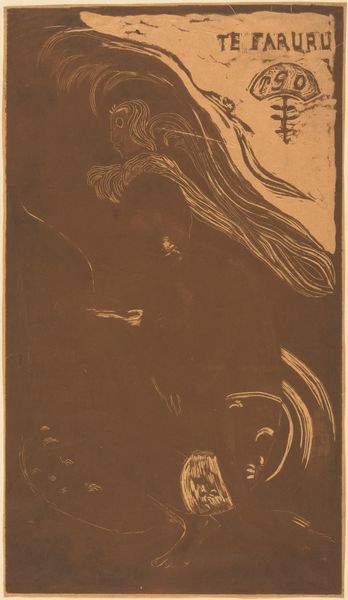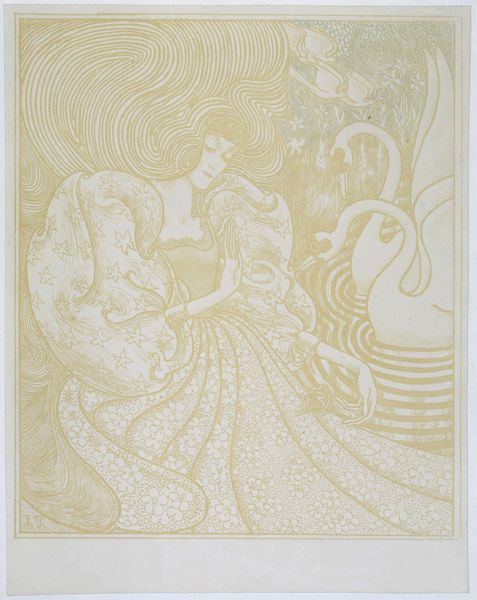
#
pen drawing
#
sculpture
#
a lot of detail
#
unrealistic statue
#
carved into stone
#
haunting style
#
pen work
#
doodle art
#
marker colouring
#
intricate and detailed
Copyright: Public domain
Editor: Harry Clarke’s pen drawing, "The Little Mermaid and the Sea Witch" from 1916, feels incredibly dark, despite its fairy tale origins. The level of detail is astounding! How do you interpret the symbolism at play here? Curator: Notice how Clarke uses stark black and white to amplify the story's inherent darkness, a recurring motif. The mermaid, although beautiful, is presented with a melancholic gaze, holding a chalice perhaps alluding to a painful choice. Doesn't the Sea Witch, encircled by snakes, remind you of Medusa, embodying danger and manipulation? Consider the broader cultural anxieties of the time – the aftermath of the Titanic, the looming shadow of war. Might these have influenced Clarke's interpretation, turning a children's story into something more sinister? Editor: That’s fascinating. I hadn't considered those connections. The chalice now seems less like a hopeful gesture and more like a poisoned offering. Curator: Precisely. Symbols shift meaning across contexts, yet retain echoes of their past. Even the scales of the mermaid, heavily ornamented, move past simple decoration, to representing societal expectations or constraints, perhaps? What does the underwater setting itself tell us, heavy as it is with these baroque-esque images? Editor: I guess it reflects the hidden, darker side of desire and transformation, a claustrophobic contrast to the open sea. Curator: A fitting conclusion. Clarke masterfully employs recognizable images and then twists their traditional understanding, creating a piece rich with lasting psychological impact. The past is ever-present. Editor: Thank you. It's eye-opening how much historical context can transform your perception of even a familiar tale.
Comments
No comments
Be the first to comment and join the conversation on the ultimate creative platform.
